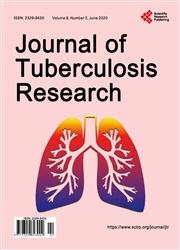Prevalence of Latent Tuberculosis (LTB) among Household Contacts of Newly Diagnosed Omani Pulmonary Tuberculosis Patients
引用次数: 0
Abstract
Background: Oman is a high-income, low prevalent country for tuberculosis disease. Although the rates have remained static over the last decade, the country is aiming for Tuberculosis (TB) elimination. Household contacts of pulmonary TB (PTB) patients form a high-risk group of susceptible individuals who could remain reservoirs of active disease. Objective: A retrospective study was conducted to estimate the prevalence of latent TB infection by Tuberculin Skin Test (TST) or Interferon-Gamma Release Assay (IGRA) screening tests among the household contacts of Omani patients with pulmonary tuberculosis. Design: A cross-sectional survey conducted between 2017 and 2018 of TB cases and their contacts in Muscat Governorate, Oman. Results: Out of the 278 contacts identified, 188 contacts fulfilled the inclusion criteria and were enrolled into the study. The prevalence of Latent Tuberculosis Infection (LTBI) was 22.8% (95% CI: 17.0 - 29.5) among household contacts. We found higher proportions of LTBI among females than males (28.7% vs. 15%, p = 0.027). Those who were exposed to Acid Fast Bacilli (AFB) smear positive cases were more likely to be LTBI (28.7% versus 15% in smear negative cases; p = 0.047). We also found an increasing trend of infection (32.3%) in the oldest age group (46 - 80 years). Conclusion: Besides children, female household contacts and older age contacts should be prioritized for screening as they are more likely to be infected and develop active disease.阿曼新诊断肺结核患者家庭接触者中潜伏性肺结核(LTB)的患病率
背景:阿曼是一个高收入、结核病流行率低的国家。尽管在过去十年中发病率一直保持不变,但该国的目标是消除结核病。肺结核(PTB)患者的家庭接触者构成了易感人群的高危人群,他们可能仍然是活动性疾病的宿主。目的:通过结核菌素皮试(TST)或干扰素γ释放试验(IGRA)筛查,对阿曼肺结核患者的家庭接触者中潜伏性结核病感染的患病率进行回顾性研究。设计:2017年至2018年间对阿曼马斯喀特省的结核病病例及其接触者进行的横断面调查。结果:在确定的278名接触者中,188名接触者符合纳入标准并被纳入研究。在家庭接触者中,潜伏性结核病感染(LTBI)的患病率为22.8%(95%CI:17.0-29.5)。我们发现,女性LTBI的比例高于男性(28.7%对15%,p=0.027)。那些暴露于抗酸杆菌(AFB)涂片阳性病例的人更有可能是LTBI(28.7%,对涂片阴性病例的15%;p=0.047)。我们还发现,在最年长的年龄组(46-80岁)中,感染率呈上升趋势(32.3%)。结论:除儿童外,女性家庭接触者和老年接触者应优先进行筛查,因为她们更有可能被感染并发展为活动性疾病。
本文章由计算机程序翻译,如有差异,请以英文原文为准。
求助全文
约1分钟内获得全文
求助全文

 求助内容:
求助内容: 应助结果提醒方式:
应助结果提醒方式:


